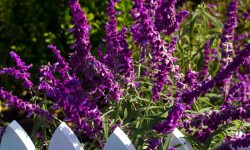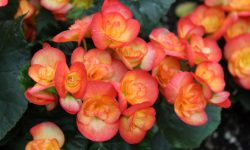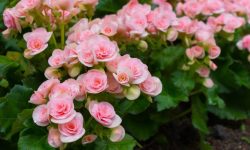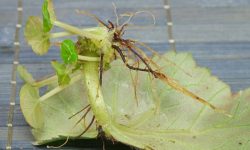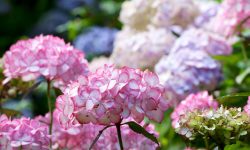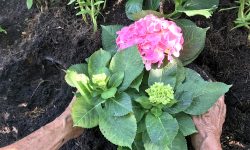Russian Sage, also known as Perovskia atriplicifolia, is one of the most popular perennials in American gardens. With its silvery-gray foliage and striking lavender-blue flowers, it adds elegance throughout summer and early fall. However, to maintain its vitality and keep a tidy shape, pruning at the right time is essential. Proper pruning not only encourages more vibrant blooms but also prevents stems from becoming overly woody or crowded.
Knowing when and how to prune Russian Sage allows you to maximize its long-lasting beauty in your garden. This article provides step-by-step guidance, from understanding why pruning is necessary to executing it correctly. Whether you are a beginner or an experienced gardener, these expert tips will help your plant stay healthy, bloom consistently, and become a standout feature in your outdoor space.
Understanding Russian Sage and Its Growth Patterns
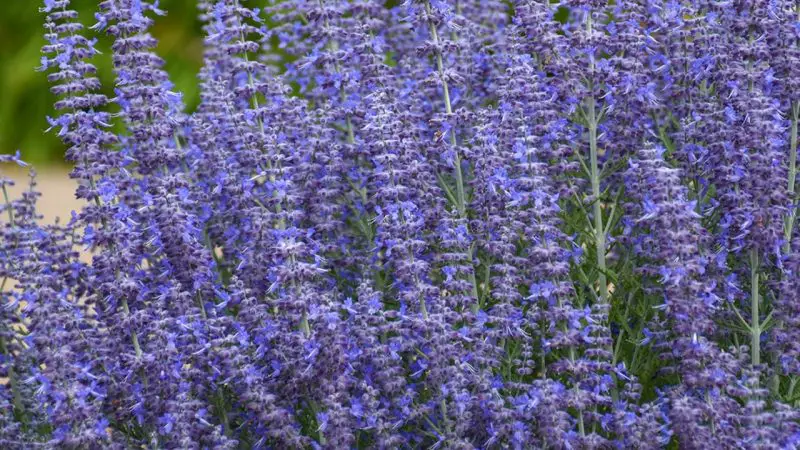
Russian Sage (Perovskia atriplicifolia) is a hardy perennial valued for its long-lasting beauty and low maintenance. It features silvery-gray foliage and spires of lavender-blue flowers that bloom from mid-summer through early fall. This plant thrives in full sun and well-draining soil. It tolerates drought and poor soil conditions, making it an excellent choice for gardeners seeking resilient, low-maintenance perennials. Russian Sage can grow between three to five feet tall, with stems that become woody as the plant matures. Understanding its growth habits is key to knowing when and how to prune effectively.
During the growing season, Russian Sage produces multiple stems that rise from a central crown. Its flowers attract pollinators such as bees and butterflies, enhancing garden biodiversity. Without regular pruning, stems may become leggy, reducing air circulation and flower production. Proper pruning encourages compact growth, renews energy for new shoots, and ensures a more uniform, attractive shape. Gardeners often mistake it for other perennials, but its aromatic leaves and upright flowering spikes are distinct characteristics that aid identification. Observing these traits helps determine the right pruning approach and timing.
Winter dormancy is an important factor in pruning decisions. In colder climates, Russian Sage dies back to the ground, conserving energy for the next season. Cutting too early or too late can reduce blooms or damage woody stems, impacting overall plant health. By understanding seasonal growth patterns, gardeners can plan pruning schedules that enhance flowering, maintain structure, and promote long-term vitality. Knowledge of its life cycle is essential for ensuring that Russian Sage remains a vibrant, enduring feature in any garden.
Benefits of Pruning Russian Sage
Pruning Russian Sage offers numerous advantages that enhance both the plant’s appearance and overall health. Regular trimming encourages vigorous growth by removing old, woody stems. This process redirects the plant’s energy into producing new shoots and more abundant flowers. By maintaining a structured shape, gardeners can ensure the plant remains visually appealing throughout the season. Without pruning, Russian Sage may become unruly, with crowded stems that reduce airflow and increase susceptibility to disease.
Another key benefit is the promotion of longer-lasting blooms. Pruned plants often produce more flowers that are larger and more vibrant. Removing faded or dead flower spikes prevents the plant from wasting energy on seed production. This encourages continuous flowering, extending the ornamental value of Russian Sage in the garden. Additionally, pruning helps maintain a balanced height and prevents the plant from overshadowing nearby perennials or shrubs. Properly timed pruning ensures that the plant stays compact and harmonious within the overall landscape design.
Pruning also improves plant health and resilience. By cutting back old or damaged stems, gardeners reduce the risk of pest infestations and fungal infections. It also allows better sunlight penetration to lower leaves, enhancing photosynthesis and nutrient absorption. Seasonal pruning aligns with the plant’s natural life cycle, ensuring it has time to recover and store energy for the following year. Ultimately, these benefits make Russian Sage not only a visually striking perennial but also a reliable, long-lasting feature in any garden when pruned correctly.
When to Prune Russian Sage
Knowing the right time to prune Russian Sage is essential for maximizing its beauty and health. The ideal pruning period is late winter to early spring, just before new growth begins. At this stage, the plant is still dormant, which reduces stress and encourages robust regrowth. Waiting until spring ensures that the risk of frost has passed, preventing damage to tender new shoots. Timing pruning correctly also allows the plant to allocate energy efficiently, resulting in stronger stems and more prolific flowering. In regions with colder winters, it may be necessary to wait a little longer to avoid cutting into frozen stems.
Pruning immediately after the first frost in fall is generally not recommended. Cutting too early can expose the plant to harsh winter conditions, damaging woody stems and reducing spring growth. Observing local climate patterns is crucial, as regions with milder winters may allow for slightly earlier pruning. Additionally, gardeners should monitor the plant for signs of natural dieback. Removing only dead or damaged stems during winter helps maintain structure without compromising energy reserves. Late pruning also gives the plant time to retain some natural protection through remaining stems, which can shield the crown from extreme temperatures.
Some gardeners may choose light pruning during the growing season to remove spent flowers or unruly stems. While this does not replace the main annual pruning, it can help maintain shape and encourage continuous blooming. Seasonal pruning aligns with Russian Sage’s natural growth cycle, ensuring it remains attractive and healthy year after year. Careful observation and adherence to the correct pruning schedule guarantee that the plant thrives, producing vibrant flowers and maintaining its elegant, upright form throughout the growing season. Proper timing is the key to enjoying a lush and long-lasting Russian Sage display in any garden.
Tools and Techniques for Effective Pruning
Pruning Russian sage effectively starts with having the right set of tools. A sharp pair of bypass pruners is ideal for cutting through thin and medium stems, ensuring clean cuts without crushing the plant tissue. For mature plants with thicker, woody stems, a pair of loppers or even a small pruning saw may be necessary. Gardening gloves are also important since they protect your hands from scratches and provide a better grip. To maintain plant health, always clean and disinfect tools before and after pruning to prevent the spread of pests or diseases. Well-maintained tools not only last longer but also make the task of pruning less labor-intensive.
Once equipped with proper tools, technique becomes the key factor for success. Cuts should be made at an angle just above a healthy bud or node, which encourages new growth to develop in the desired direction. When rejuvenating older Russian sage plants, it is best to cut back stems to about one-third of their height while leaving some healthy growth for regrowth. During seasonal maintenance, remove dead or weak stems to improve airflow and prevent overcrowding. Avoid cutting too close to the crown, as this can harm the plant’s ability to push out new shoots and may stunt growth.
Selective thinning is another valuable technique to consider. Instead of trimming all stems uniformly, focus on removing the oldest and least productive stems at the base to allow more sunlight and air into the center of the plant. This not only reduces the risk of fungal issues but also enhances overall vigor. In summer, deadheading faded flower spikes just above a strong pair of leaves helps redirect the plant’s energy into producing fresh blooms. By combining sharp, clean tools with careful cutting methods, gardeners can keep Russian sage healthy, productive, and visually appealing throughout the growing season.
How to Prune Russian Sage Correctly
Pruning Russian Sage correctly ensures healthy growth and abundant blooms. Start by using clean, sharp pruning shears to prevent damage and reduce the risk of disease. Remove any dead, damaged, or weak stems first. Cutting at a slight angle just above a healthy bud encourages new growth. Focus on shaping the plant by trimming back about one-third of its height, maintaining a balanced, upright structure. Avoid cutting into old, woody stems that show no signs of new buds, as these may not regenerate effectively. Using proper tools also minimizes the risk of spreading pests or fungal infections from one plant to another.
After removing the main stems, thin out crowded areas to improve air circulation. This step prevents fungal diseases and allows sunlight to reach the inner parts of the plant. Pruning for shape also enhances the plant’s aesthetic appeal, ensuring that it blends harmoniously with surrounding perennials and shrubs. For larger or older plants, consider pruning in stages to avoid excessive stress. Collect all cut stems and dispose of them to minimize the risk of pests or pathogens spreading. Mulching the base after pruning helps conserve moisture and protects the crown during early spring growth.
Finally, monitor the plant after pruning for signs of new growth. Watering and mulching help the plant recover and encourage strong shoots. Fertilizing with a balanced, slow-release fertilizer in spring supports vibrant foliage and flower production. Additional light pruning throughout the growing season can remove spent flowers or errant stems, maintaining a tidy appearance. By following these steps carefully, gardeners can maintain a healthy, attractive Russian Sage that blooms profusely, resists common garden issues, and becomes a long-lasting feature in any landscape.
Seasonal Pruning Tips for Russian Sage
Winter Pruning Tips
During winter, Russian Sage enters dormancy, with stems dying back naturally. This is the ideal period to assess which parts of the plant need pruning. Focus on removing dead, damaged, or broken stems while leaving the healthy, woody branches intact. Doing so preserves the plant’s energy for the upcoming growing season and prevents unnecessary stress. Winter pruning also allows gardeners to evaluate the overall structure and decide on shaping strategies for spring. Inspecting the plant carefully during this season helps identify any weak or crowded areas that may hinder airflow or light penetration. Removing these stems ensures the plant will have room to grow vigorously when new shoots emerge.
Avoid heavy pruning during severe cold spells, as extremely low temperatures can damage the crown if exposed. Light trimming to remove damaged or diseased stems is sufficient in most cases. Mulching around the base of the plant provides insulation and protects roots from freezing. Gardeners may also remove old mulch or debris that can harbor pests. By following these winter practices, Russian Sage remains healthy and well-prepared for vigorous spring growth. Proper winter pruning lays the foundation for stronger stems, more blooms, and a compact, visually appealing plant throughout the next growing season.
Spring Pruning Tips
Spring is the prime time for major pruning of Russian Sage, just as new growth begins to emerge. Gardeners should wait until the danger of hard frost has passed to avoid damaging tender shoots. Begin by cutting back about one-third of the previous year’s growth, focusing on removing weak, leggy, or overcrowded stems. This encourages the plant to produce stronger shoots and more abundant flowers during the upcoming season. Observing the plant’s natural shape ensures that pruning enhances both health and aesthetics, promoting a full, balanced appearance.
After the initial cuts, thin out crowded areas to improve airflow and light penetration to the plant’s center. This step helps prevent fungal issues and allows pollinators to access flowers more easily. Fertilizing at this stage supports vigorous new growth, while mulching retains soil moisture and regulates temperature. Light maintenance pruning during the season, such as removing spent flowers or wayward stems, can also prolong blooming. By following these spring pruning tips, gardeners can maximize Russian Sage’s flowering potential, maintain an attractive structure, and ensure a thriving, long-lasting plant throughout the growing season.
Summer Pruning Tips
During summer, Russian Sage may benefit from light pruning to maintain shape and encourage continuous blooming. Removing spent flower spikes, also known as deadheading, prevents the plant from putting energy into seed production. This simple step allows the plant to redirect energy toward new shoots and flowers, extending the flowering period. Summer pruning should focus on controlling height and preventing the plant from becoming too leggy, ensuring a tidy and attractive appearance in the garden. Regularly inspecting the plant also helps detect any signs of disease or pest activity early, allowing timely intervention to keep the plant healthy.
It is important not to over-prune during summer, as excessive cutting can stress the plant and reduce flower production. Focus on selective trimming of unruly stems or areas where the plant may be encroaching on neighboring plants. Removing weak or damaged stems enhances overall airflow and sunlight penetration, further supporting healthy growth. Regular maintenance pruning combined with adequate watering and fertilization during the warmer months ensures Russian Sage remains vigorous, healthy, and full of vibrant flowers. These practices enhance both the aesthetic appeal and the long-term vitality of the plant, helping it thrive throughout the summer season and prepare for autumn.
Autumn Pruning Tips
Autumn is the season to prepare Russian Sage for winter while maintaining garden aesthetics. Focus on removing faded flower spikes and any dead or damaged stems from the summer growth. This type of pruning helps the plant conserve energy and reduces the risk of disease over the colder months. Light shaping at this time also ensures the plant remains tidy and attractive, preventing unruly stems from taking over garden beds or crowding neighboring plants. Autumn pruning is not meant for heavy cutting; it is primarily maintenance to set the stage for winter dormancy.
In addition to pruning, gardeners can apply a layer of mulch around the base of the plant to protect roots from frost and temperature fluctuations. Avoid cutting back too deeply into the woody stems, as severe pruning in autumn can expose the plant to cold damage. Maintaining a balance between aesthetics and plant health is key. By following these autumn pruning tips, Russian Sage will enter winter strong and well-prepared, ensuring vigorous regrowth and abundant blooms in the spring. Consistent seasonal care makes the plant resilient, long-lasting, and a standout feature in any garden throughout the year.
Encouraging More Blooms Through Pruning
Pruning Russian sage is not just about controlling size or removing dead stems—it is also a powerful way to encourage abundant flowering. By strategically trimming at the right times, gardeners can signal the plant to redirect energy toward producing fresh blooms. One of the most effective methods is light pruning or deadheading during the summer. When flower spikes begin to fade, cutting them back just above a strong pair of leaves stimulates the plant to develop new flower shoots. This practice can extend the blooming season well into late summer, ensuring continuous waves of color.
Another effective strategy is mid-season trimming. If Russian sage begins to look leggy or floppy in midsummer, cutting back some stems by about one-third can rejuvenate its growth. This encourages the plant to produce new side branches that often bear additional flowers. The result is a fuller, bushier plant with more flowering potential. Gardeners who practice this technique often find that their Russian sage maintains both structure and color longer than plants left untrimmed. Timing, however, is key—cutting too late in the season may not give the plant enough time to develop new blooms before frost.
Proper aftercare following bloom-boosting pruning also makes a big difference. Ensuring the plant has adequate water during hot, dry spells helps it channel resources into flowering rather than just foliage. A light application of fertilizer after trimming provides nutrients needed for bud formation, though moderation is essential to avoid excessive leafy growth. Combined with consistent deadheading and selective trimming, these techniques create the perfect balance between vigor and flower production. With a thoughtful pruning routine, gardeners can enjoy a longer-lasting, more vibrant display of Russian sage blooms year after year.
Preparing Russian Sage for Winter After Pruning
Getting Russian sage ready for winter is an important step to ensure healthy regrowth in spring. After the final flush of flowers has faded in late summer or early fall, avoid heavy pruning, as cutting back too much before winter can expose the crown to cold damage. Instead, focus on light cleanup by removing only the dead or broken stems. Leaving most of the structure in place helps protect the plant during cold weather. The stems act as natural insulation, shielding the crown and roots from frost while also catching snow, which provides extra protection against temperature fluctuations.
Mulching is another key practice in preparing Russian sage for winter. Apply a light layer of mulch, such as shredded leaves or bark, around the base of the plant to insulate the roots. Be careful not to pile mulch directly against the crown, as this can trap moisture and lead to rot. In regions with particularly harsh winters, gardeners may also consider adding a protective cover, such as burlap, to shield plants from extreme cold and drying winds. This is especially useful for young or recently transplanted Russian sage plants, which are more vulnerable to freezing conditions.
Winter preparation does not stop once the mulch is applied. Monitoring the plant throughout the season helps ensure it remains healthy. Check occasionally for signs of crown rot or pest activity beneath the mulch. When spring approaches and temperatures begin to warm, remove the protective mulch layer gradually to prevent shocking the plant. At this point, you can proceed with a more thorough pruning session to remove old growth and encourage new shoots. By taking these proactive steps, gardeners give Russian sage the best chance to overwinter successfully and burst into vigorous growth and blooms when the growing season returns.
Reviving Overgrown or Neglected Russian Sage
When Russian sage has been left unpruned for several seasons, it may become woody, sprawling, and less productive. Reviving an overgrown plant requires patience and the right approach. Start in early spring by cutting back the stems to about one-third of their original height, making sure to leave some healthy growth for regeneration. Remove the oldest, thickest stems at the base to open up the plant and encourage airflow. This helps stimulate new shoots that will grow stronger and produce more blooms. A heavy rejuvenation cut may look drastic at first, but it often restores vigor.
In addition to cutting back, attention to soil and location can help revive neglected Russian sage. Overcrowded plants should be thinned or even transplanted to a sunnier, well-drained spot if growth has declined. Adding compost or a light application of fertilizer in spring provides nutrients that support recovery, but avoid rich feeding, as it encourages floppy growth. Mulching around the base helps retain moisture and regulate temperature, which is especially beneficial for weakened plants. With proper soil preparation and care, even tired Russian sage can regain its energy.
Ongoing maintenance after rejuvenation pruning is crucial for lasting improvement. Deadhead faded flowers in summer to extend the blooming period and keep the plant looking fresh. Regular monitoring for weeds, pests, or fungal issues will prevent further decline. Within a season or two, most neglected Russian sage plants respond well to consistent pruning and care, rewarding gardeners with a full, upright shape and waves of lavender-blue flowers. By following these steps, even overgrown or neglected Russian sage can be restored to a healthy, beautiful centerpiece in the garden.
Common Mistakes to Avoid When Pruning Russian Sage
Pruning Too Early in the Season
One of the most frequent mistakes gardeners make is pruning Russian Sage too early, often in late winter when temperatures remain unstable. Cutting the plant back before the risk of frost has passed can encourage tender new shoots to appear prematurely. These young stems are highly vulnerable to sudden cold snaps, and frost damage can set back growth for weeks. As a result, flowering may be delayed, and the plant can lose vigor going into spring. Premature pruning also removes the natural protection provided by old stems, which shield the crown from cold winds, snow, and fluctuating temperatures. Without this insulation, plants are far more exposed to injury during unpredictable late frosts.
To avoid this mistake, pruning should only begin once new buds are visible, signaling that the plant is ready for the growing season. Waiting until early to mid-spring ensures that all new growth has the best chance to thrive without frost damage. Observing local climate patterns is essential, as regions with harsher winters may require longer waiting periods. Gardeners in warmer zones may prune earlier, while those in colder climates should be patient to protect the crown. By timing pruning correctly, Russian Sage develops a strong foundation for healthy foliage, stronger stems, and abundant flowers that last from summer through fall.
Cutting Too Much During the Growing Season
Another common mistake is over-pruning Russian Sage while it is actively blooming. Heavy cutting in summer often removes stems that could still produce flowers, significantly reducing the plant’s visual impact. Excessive pruning also causes stress, forcing the plant to channel energy into recovery instead of producing flowers. This stress can weaken stems, reduce drought tolerance, and leave the plant more vulnerable to pests or fungal problems. A plant that is over-trimmed may appear sparse and unattractive, losing the airy, graceful quality that Russian Sage is known for.
Instead, summer care should focus on light maintenance, such as deadheading spent flowers or trimming back unruly stems. Selective cuts keep the plant tidy without sacrificing its flowering potential. Leaving enough foliage ensures photosynthesis continues efficiently, fueling strong growth and more blooms. Gardeners should also avoid cutting all stems at once, as this can shock the plant. A better approach is to prune gradually over several weeks, which allows for continuous flowering and a healthier structure. By practicing moderation and timing, Russian Sage can thrive throughout the summer, maintaining vibrant color and lush foliage without compromising its long-term health.
Cutting Into Old Woody Stems
Pruning into old, woody stems is another error that can harm Russian Sage. These stems often lack active buds and may not regenerate once cut back. Removing them too aggressively can leave unsightly gaps in the plant’s structure, reducing its fullness and overall appeal. This practice also affects flowering potential, since the most productive growth comes from younger, more flexible shoots. If too many woody stems are cut in one season, the plant may lose balance, resulting in a weak and uneven appearance. Over time, repeated mistakes can diminish the plant’s resilience and shorten its lifespan.
The best approach is to focus pruning on stems that show signs of life, such as swelling buds or green tissue beneath the bark. Older stems should be thinned gradually over several years rather than removed all at once, which prevents shock and allows new shoots to establish. Gardeners can also rejuvenate Russian Sage by encouraging basal growth, cutting older stems back just above healthy buds instead of removing them entirely. This technique helps maintain density, structure, and vigor. By avoiding harsh cuts into unproductive wood, gardeners preserve the plant’s natural airy shape while ensuring a steady cycle of fresh growth and abundant flowering season after season.
Using Improper or Dirty Tools
Many gardeners underestimate the importance of proper tools when pruning Russian Sage, but this mistake can seriously affect plant health. Dull or rusty pruning shears crush stems instead of creating clean cuts, which slows the healing process and leaves plants vulnerable to infection. Dirty tools may also carry fungal spores, bacteria, or insect eggs from one plant to another, spreading problems across the entire garden. Over time, these issues can weaken Russian Sage, reduce its flowering capacity, and even lead to plant decline. Poor-quality or unsuitable tools can also make pruning more difficult, causing gardeners to cut unevenly or damage stems unintentionally.
To prevent these problems, gardeners should invest in sharp, high-quality pruning shears and keep them clean. Sterilizing blades with rubbing alcohol or a diluted bleach solution before each use minimizes the risk of disease transfer. Making angled cuts just above healthy buds ensures quick healing and directs energy toward new growth. It is also helpful to oil and maintain tools regularly, which extends their lifespan and makes pruning easier. Proper equipment care may seem like a small step, but it plays a big role in preserving the vigor of Russian Sage. With clean, well-maintained tools, the plant remains strong, resilient, and capable of producing long-lasting blooms season after season.
Frequently Asked Questions About Pruning Russian Sage
How often should Russian sage be pruned?
Prune Russian sage once yearly in early spring to remove old stems and shape the plant. Light deadheading in summer encourages extended blooming. Avoid heavy fall pruning, as it exposes the crown to winter damage. Regular pruning keeps plants vigorous and promotes abundant flowers.
Can Russian sage be cut back to the ground?
Do not cut Russian sage to the ground, as it stresses the plant and slows regrowth. Instead, trim stems to about 12–18 inches in spring. This keeps old wood for new shoots, strengthens growth, and helps protect against winter dieback while ensuring reliable blooming.
What should I do with leggy or floppy Russian sage?
For leggy Russian sage, cut stems back by one-third mid-season to promote bushier growth. Deadhead faded blooms to encourage new flowers. Ensure the plant receives full sun and grows in well-drained soil. Avoid overly rich soil, which encourages weak, floppy growth instead of sturdy stems.
Do I need to fertilize Russian sage after pruning?
Apply a light dose of balanced fertilizer or compost after pruning in spring. Over-fertilizing causes excessive foliage at the expense of blooms. Russian sage thrives in lean soil, so minimal feeding is best to support strong stems and vibrant flowers throughout the growing season.
How do I prune Russian sage in cold climates?
In cold regions, leave stems standing over winter to insulate the crown. Prune in early spring once buds swell, cutting stems back by one-third. This avoids frost damage while encouraging new growth and ensures the plant directs energy into fresh stems and abundant flowering.
Conclusion
Pruning Russian sage is more than just a maintenance task—it is the key to keeping this hardy perennial at its best. With the right timing, tools, and techniques, gardeners can shape the plant, encourage abundant blooms, and ensure long-term health. Whether it’s a simple spring cutback, mid-season trimming, or careful aftercare, each step plays a role in promoting vibrant color and fragrance throughout the garden. By avoiding common mistakes and practicing mindful pruning, Russian sage will reward you with lasting beauty, resilience, and a stunning display that brightens your landscape year after year.

